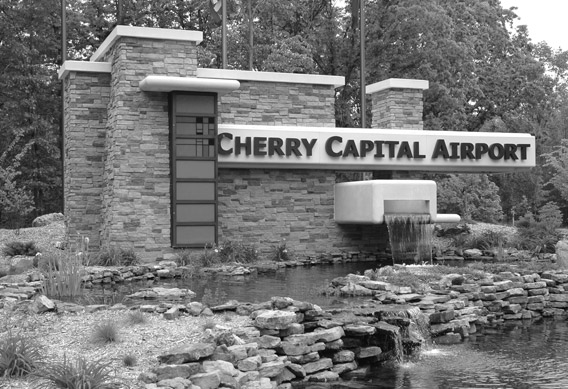|
|
Perhaps the widest range of scales and uses occurs in the category of Institutional & Cultural facilities, covering everything from a small-town post office to Munson Medical Center. While many Institutional & Cultural uses are not commercial per se, some do include commercial uses, and their site designs involve many of the same elements. As with all other categories of development, the principles found in the Critical Design Practices section of the Guidebook should be applied to Institutional & Cultural uses at any scale. The wide variety of Institutional & Cultural facilities makes it difficult to recommend specific guidelines that will apply to all, but some general characteristics describe most of these uses.
- Facilities located near population and activity centers such as downtown areas maximize pedestrian and bike access (e.g., Old Town Playhouse, Suttons Bay School, libraries)
- Facilities located with retail in mixed-use areas help create vibrant, dynamic communities
- Facilities can often be a community focal point (e.g., city hall, church, school)
- Uses that are large in scale involve many of the same site design elements as Regional Centers
|
|

Post Office, Northport, Leelanau County
|
|
Governmental
Governmental facilities range in scale from rural township halls to the multiple-building complex of the Grand Traverse County Governmental Center. Activity levels vary from occasional use for township meetings or wedding receptions to daily usage with hundreds of employees and visitors. The prominence and civic importance of governmental buildings can be elevated through their location and architectural quality; civic presence is enhanced by height, mass, and materials. Primary building entries should face public streets and be strongly articulated. Civic buildings should be visually connected with their surrounding neighborhood, perhaps as a prominent focal point that terminates a vista.
|
|
|

Maritime Academy building at Northwestern Michigan College, Traverse City, Grand Traverse County
|
|
Educational
Educational facilities range in scale from the Greenspire Montessori school at Grand Traverse Commons to Northwestern Michigan College. Locating them within communities provides greater access for pedestrians and bicyclists, especially younger users. Larger facilities have greater parking needs, for both employees and visitors. Educational facilities sometimes include accessory uses (e.g., athletic fields) requiring a larger site area; these can be integrated into a neighborhood through careful site design.
|
|
|

Munson Medical Center, Traverse City, Grand Traverse County
|
|
Medical
From small neighborhood clinics to Munson Medical Center, medical facilities cover the entire spectrum of scale. Small-scale facilities are easier to integrate into existing communities and can be located in former residential structures. Facilities at the larger end of the scale have correspondingly greater impacts, particularly the need for employee and visitor parking. The large numbers of vehicles to be accommodated and/or a limited site area may make a parking deck (e.g., Munson) or parking below a building (e.g., Copper Ridge) the optimal solution. Site access and circulation are important considerations for medical facilities, particularly regarding people with limited mobility and emergency vehicle access.
|
|
|

Dennos Museum Center and Milliken Auditorium at Northwestern Michigan College,
Traverse City, Grand Traverse County
|
|
Cultural
Cultural facilities may be stand-alone commercial ventures or part of an educational or civic institution. Parking needs may be considerable where large groups of people are congregating but can be minimized by well-designed pedestrian and bicycle access. Occasional use may facilitate shared parking if cultural facilities are located near other types of uses. Some of the different types of cultural facilities include:
• Outdoor performance space, street music
• Festivals, community events
• Community theaters
• Movie theaters
• Concert venues
• Museums
• Art galleries
• Public gardens
• Public art
• Sports facilities
• Libraries
|
|
|

Kaliseum, Kalkaska, Kalkaska County
|
|

Traverse Area District Library, Traverse City, Grand Traverse County
|
|
Places of Worship
Worship facilities vary from small neighborhood buildings to large community church complexes (e.g., New Hope Community Church), with a correspondingly wide range of needs and impacts. Small facilities are readily integrated into residential areas and can be a neighborhood focal point. The relatively limited and predictable period of peak parking use presents opportunities for shared parking when these facilities are mixed with other uses. Large facilites that may include educational components benefit from incorporation of many of the same site design elements as Regional Centers.
|
|
|

|
|
Airports
From small, private, grass landing strips to Cherry Capital Airport, airports also cover a range of scale and activity. Airports require large land areas and create noise that can have a negative effect on surrounding properties. Well-designed access is imperative for large, public facilities. Signs are used on- and off-site to direct people to the proper areas. Federal regulations control many of the elements of site design for airport facilities.
|
|
|

|
|
